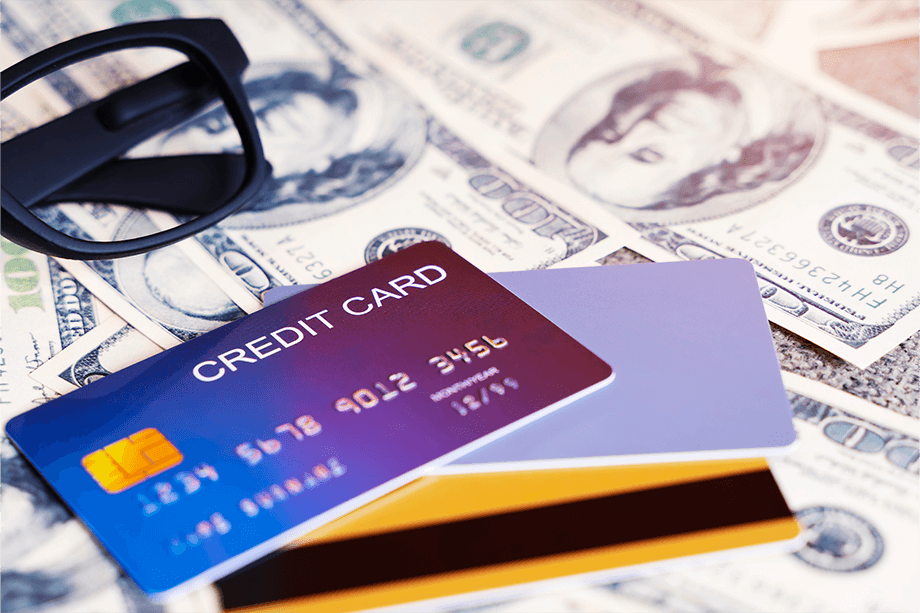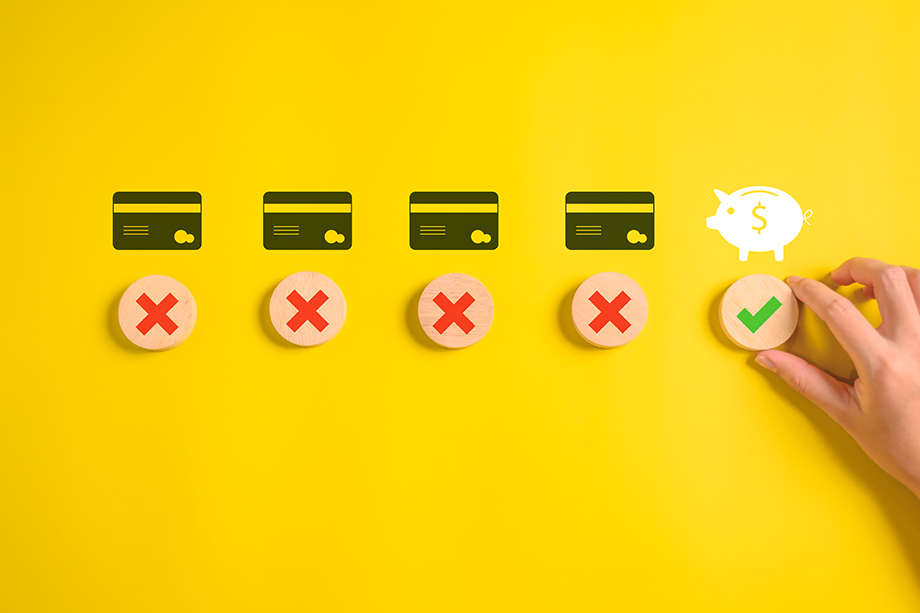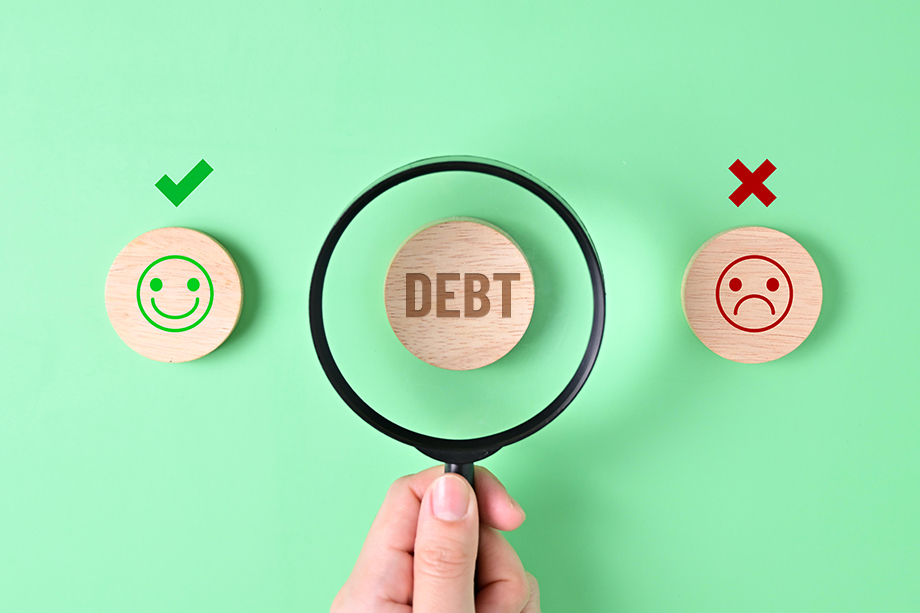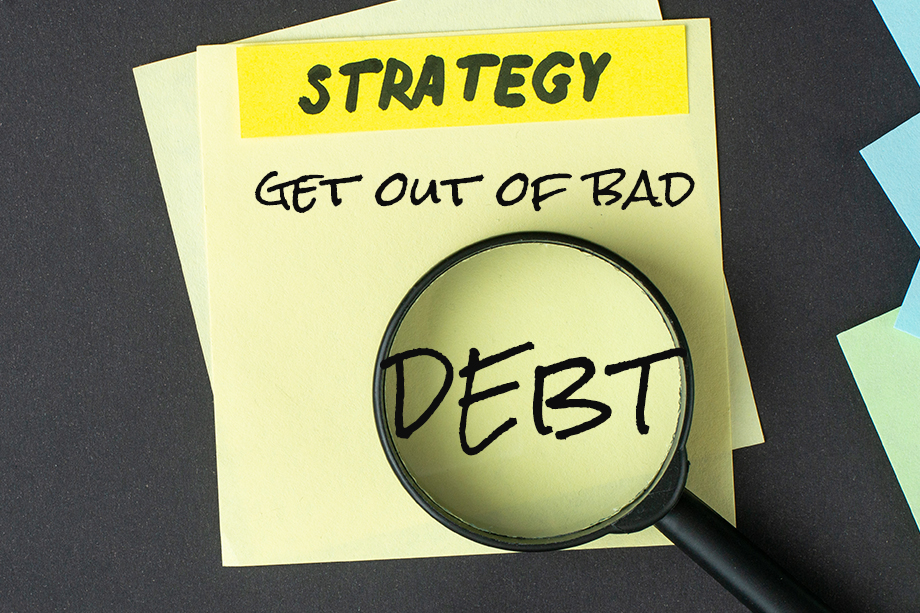According to News Nation, the average American household carries approximately $8,500; and just like many Americans who face seemingly insurmountable bad debt, both Robert and Kim Kiyosaki also had major debt after Robert’s velcro-wallet business failed.
Fighting off the debt snowball
In 1985, Robert and Kim had a great deal of bad debt. And even though they kept making payments every month, they never seemed to make a dent in the amount owed. Each month, they paid a little over the minimum on each one of their credit cards and car loan. But deep down, they knew there had to be a better way to get themselves out from under their creditors. And sure enough, there was.
How this one simple formula can erase your credit card debt
Here is the formula Robert and Kim followed to pay off their debt.
You’ll find that if you follow this formula, you will be out of debt much quicker than you imagined. Most people find themselves “bad” debt-free within 5-7 years. The key is to stick with the formula. You will not get ahead if you say “I’ll just skip this month, and then two, and then three.” If you stick with the formula, it then becomes a habit you follow for a lifetime.
While Robert and Kim enjoy tremendous financial success now, they too have experienced their share of tough times. Kim wrote about their steps for getting out of bad debt here.
The method Robert and Kim described is very powerful. In fact, you may be able to slash the amount of time and money it takes to pay off your debt dramatically.
Their debt reduction strategy has several powerful elements, here’s why it works:
- You keep your total monthly payment fixed.
This is the first way to beat the card issuers at their own game. In this example, the total monthly payment is $296. As you pay down your debts, the amount your credit card issues will require you to pay will become smaller. But you won’t fall for it. You’ll pay at least $296 each month until all the debts are paid. Just doing that alone cuts the repayment period from 182 years and 1 month down to just under 15 years and saves you over $63,000 in interest. You can put down that Biblical rock. - You stop charging.
If you must have a card for business purposes only, keep it out of the plan. Let your business promptly pay off that card. But for personal purchases, don’t use a credit card. You’ve heard the saying: If you’re in a hole, stop digging. - You add extra if you can.
If you can afford an extra $50 a month in this example, you’ll be debt-free in just five years, and you’ll save over $65,000 in interest. Whew! - You target only one debt at a time.
If you try to do too many things at once you’ll lose focus and won’t get anywhere. If you focus on paying one debt off at a time, you’ll be much more successful. For maximum savings, you should target the highest rate debt first. However, if you’re like Kim and Robert and want to see some fast results, focus on the lowest balance first. - You’ll have a plan.
Research by the Consumer Federation of America and the Bank of America found that people with as little as $10,000 a year in income who reported having a written plan had twice as much money in savings and investments as those without a plan. The same principle applies when you are getting out of debt. Having a written plan can give you that discipline and motivation you need.
Turbocharge your debt-free plan
The lower your interest rate, the faster you’ll get out of debt. Many people are still trapped in high-rate credit card debt, at interest rates ranging from 19.98% to 29.99%, or even higher.
You’ll turbocharge your plan if you also try to get the lowest rates possible. As you start to pay off your credit cards, you should constantly be looking for ways to lower your interest rates.
Talk your way out of debt
Scott Bilker is the author of “Talk Your Way Out of Credit Card Debt.” Scott has made and recorded hundreds of calls with banks in his efforts to lower interest rates for himself, family, and friends. In his book, he uses this real-life illustration:
He made 52 phone calls that took 403 minutes (6 hours, 43 minutes) and saved $43,147.68. That’s an average savings of $107.07 per minute. Wouldn’t you like to save over a hundred bucks a minute?
Scott has over 50 credit cards and he has paid 0% interest on his balances for the past 15 years. He also has maintained a great credit score, and routinely racks up all kinds of rewards. He’s clearly a credit winner.
Act on your plan
If you want your card company to lower your interest rate, remember that it never hurts to ask. So, go ahead, stand tall and ask for a rate reduction.
Once you’ve created your plan to tackle your debt, take action! For more tips on tackling debt, get Rich Dad advisor Garrett Sutton’s book, ABC of Getting Out of Bad Debt: Turn Bad Debt into Good Debt and Bad Credit into Good Credit.
P.S. Don’t forget to check out Ken McElroys’ new book, “Return to Orchard Canyon”.







